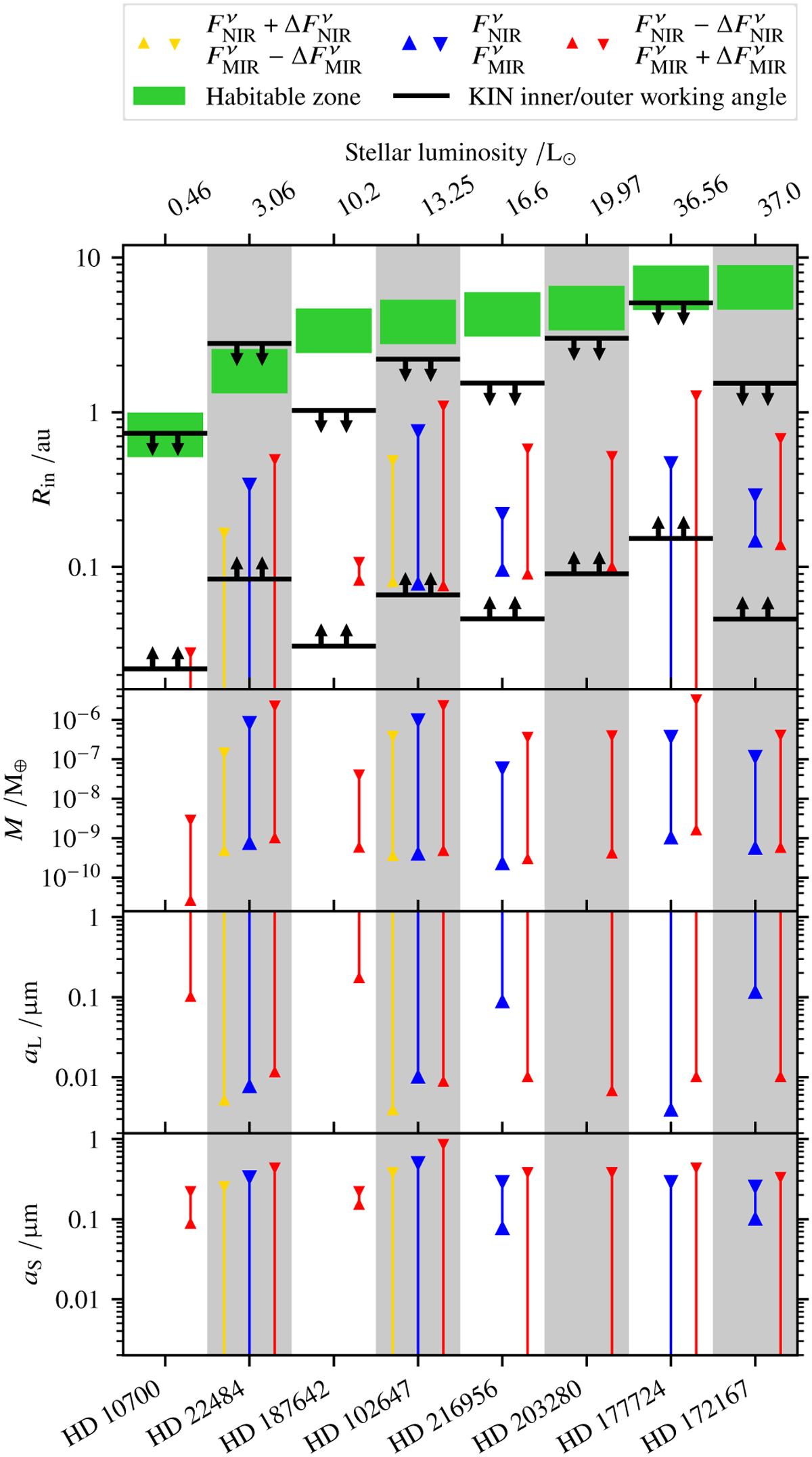Fig. 2

Download original image
Constraints on HEZD parameters of inner disk radius Rin, total dust mass M, and grain radius of the populations of larger and smaller grains, aL and aS. Three approaches were used to deal with observational uncertainties: no uncertainties (![]() ,
, ![]() ) in blue; plus NIR, minus MIR uncertainty (
) in blue; plus NIR, minus MIR uncertainty (![]() ,
, ![]() ) in gold; and minus NIR, plus MIR uncertainty (
) in gold; and minus NIR, plus MIR uncertainty (![]() ,
, ![]() ) in red. No markers are displayed when the respective quantity could not be constrained because the MIR excess leak was non-positive due to instrumental noise (see Sect. 3.1), no viable dust distribution was found in the investigated parameter space that is able to reproduce the observations (see Sect. 3.4), or the boundary of the chosen simulated parameter space (see Sect. 2.5) was reached (for Rin, aL, or aS). In addition, the first panel shows the location of the habitable zones (as defined in Sect. 2.5 of Kirchschlager et al. 2017) and the inner and outer working angles of the KIN at the respective system distances that represent the borders of the parameter space of disk radii used in the simulations. The second panel shows the total dust mass M with possible grain radii shown in the third and fourth panel. When no further restrictions were possible, the boundaries of the parameter space apply (i.e., is grain radii from 1 nm to 1 mm).
) in red. No markers are displayed when the respective quantity could not be constrained because the MIR excess leak was non-positive due to instrumental noise (see Sect. 3.1), no viable dust distribution was found in the investigated parameter space that is able to reproduce the observations (see Sect. 3.4), or the boundary of the chosen simulated parameter space (see Sect. 2.5) was reached (for Rin, aL, or aS). In addition, the first panel shows the location of the habitable zones (as defined in Sect. 2.5 of Kirchschlager et al. 2017) and the inner and outer working angles of the KIN at the respective system distances that represent the borders of the parameter space of disk radii used in the simulations. The second panel shows the total dust mass M with possible grain radii shown in the third and fourth panel. When no further restrictions were possible, the boundaries of the parameter space apply (i.e., is grain radii from 1 nm to 1 mm).
Current usage metrics show cumulative count of Article Views (full-text article views including HTML views, PDF and ePub downloads, according to the available data) and Abstracts Views on Vision4Press platform.
Data correspond to usage on the plateform after 2015. The current usage metrics is available 48-96 hours after online publication and is updated daily on week days.
Initial download of the metrics may take a while.


